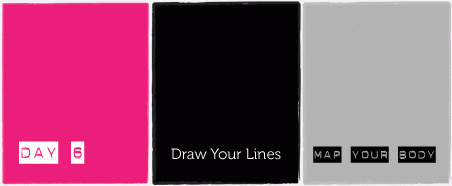
Consent is a contentious issue, and digital spaces have further complicated. Sometimes our presence alone makes people think they have the right to our bodies. Instead of asking, they make assumptions based on our clothes or behavior. Instead of asking, they do what they want until we say no. And sometimes even that doesn’t stop them. They use hands, weapons and cameras. Once we’re on their cameras, they think they can share us with the world.
We often assume we know other people’s lines. Sometimes we expect them to be the same as ours, or we think we have a right to certain parts of their bodies. Think about how you interact physically with others in public spaces. Do you feel comfortable tapping people on the shoulder? Are shaking hands or hugging the norm in your community? Do you like to have a certain amount of personal space or do you wish you had more?
Violence comes into play when people take advantage of close quarters--when we’re packed into trains--or isolated spaces--when we’re alone on a quiet street. It happens when people assume our bodies to be public. It happens when consent is just an idea instead of a reality.
TAKE ACTION
MAP YOUR BODY
Draw an outline of a body and choose different colors for what is private, what is public and what varies. Your body map might take different forms depending on the people around you or the space you’re in. You might want to talk it out with partners or friends. Share your map with us by uploading the image to this site. Peruse the collection of body maps to explore how lines vary across ages, genders, cultures, communities, spaces and more.
Map your body! Know your lines and remind people they must ask for consent instead of taking what isn’t theirs.
Issue
- Log in to post comments

